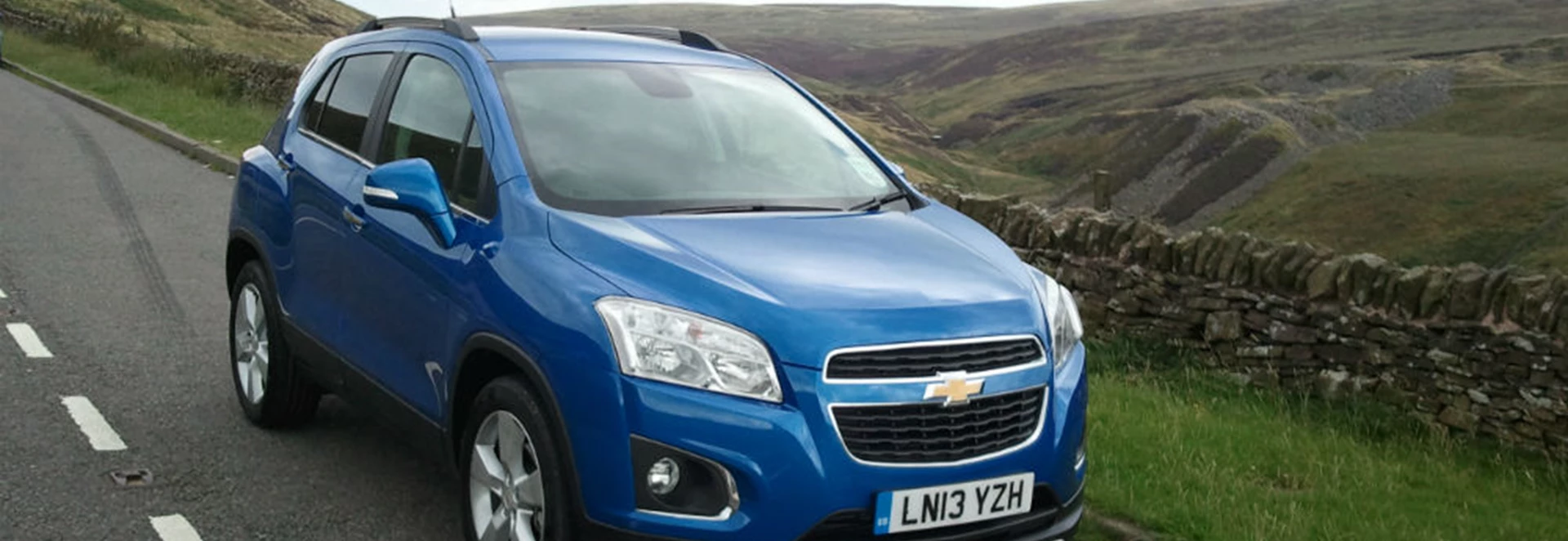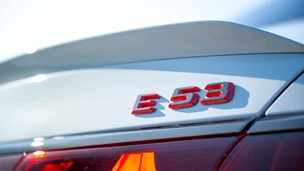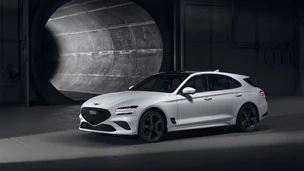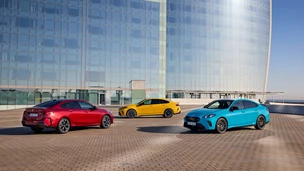Introduction The Chevrolet Trax is the latest in a wave of new compact SUVs to arrive to the lucrative crossover market in 2013. Cars like the Nissan Qashqai and Nissan Juke have proven in the past few years that the UK has an appetite for small SUV-style cars. Now in 2013, many other big car brands are eyeing up a nice share from this particular market segment. As well as targeting the established Nissan rivals, the new Chevrolet Trax also faces a fight for sales against other fresh faces such as the Peugeot 2008 and the Renault Captur. From within, the Chevrolet Trax actually shares many of its components (including engines) with another compact SUV made by owners General Motors: the Vauxhall Mokka. Styling-wise the Trax stands out on its own with its sizable front grille and chunky posture, much like any other Chevrolet currently sold. There are just two trim levels for the Chevrolet Trax: the more basic ‘LS’ trim starts from £15,495, while the ‘LT’ trim begins at £17,495. The starting price of the Trax is over £500 less than the Mokka (£15,999). However the Trax is still considerably more than rivals including the Peugeot 2008 (£12,995), the Renault Captur (£12,495) and the Juke (£12,995). Does the Trax measure up next to its rapidly growing number of rivals? Read on to find out. Performance 3.5/5 From launch there are three engines available for the Chevrolet Trax. There’s a basic 1.6-litre petrol unit with 114bhp, linked to a five-speed manual gearbox. This is your only option with the basic LS trim. The higher LT trim also gets the 1.6 petrol, alongside a 138bhp 1.4-litre turbo petrol unit and a 129bhp 1.7-litre VCDi diesel. The two additional engines use a six–speed manual gearbox as standard, with an optional six–speed automatic available for the diesel engine. A front-wheel drive powertrain is also standard on the Trax but the 1.4 turbo petrol and 1.7 diesel engines can be hooked up to an all-wheel drive (AWD) powertrain for at least an extra £1,540. The VCDi diesel is the quickest and most efficient engine in the Trax line-up. With a manual transmission, the Trax with this engine can do the 0 to 62mph sprint in 9.6 seconds, which is reduced to 9.4 seconds for the all-wheel drive model. The top speed of the diesel Trax is 116mph in front-wheel drive form, whereas the petrol turbo model can reach 121mph. We tested out the 1.4-litre turbo petrol and the 1.7-litre diesel models. Both units are highly responsive, but leave a little more to be desired. Although the turbo petrol engine is not the quickest in the Trax line-up, its more refined and enjoyable compared to the noisy and rattling diesel. Ride & Handling 3.0/5 The Trax was created for use in urban environments in mind, rather than taking it on any off-road terrain. While the car comes with a hill descent control switch, the low ride height and front bumper will likely discourage off-road driving anyway. On the road, the Trax stays firmly planted through both high and low speed corners. This can encourage some enthusiasm while driving, but reducing the potential for fun is the steering. While it is more weighted compared to other current Chevrolets we've driven, it sadly lacks in feedback. At higher speeds a noticeable amount of bodyroll will kick in and the ride is generally firm on any road that isn’t perfectly smooth. Practicality 3.5/5 The cabin of the Trax has fairly comfy seats and there’s plenty of space around the front, where the driver gets a height adjustable seat. At the back there’s decent amount of leg room to fit at least two adults and head room is plentiful all-round. With the rear seats up the boot of the Trax can hold 358 litres. This minimum capacity is greater than some of its rivals, like the 2008 (360 litres) and the Juke (207 litres). Other competitors do offer more though, such as the Captur (377 litres minimum). The Trax has a total of eight seating combinations available, a 60/40 split rear seat and the front passenger seat which can be folded flat. In total, the Chevrolet can offer a sizeable 1,370 litres of load capacity. Visibility looking out the front of the Trax is good, but it’s a different story when it comes to rear visibility. Due to the design of the rear pillars, and the small size of the rear window, you can hardly see anything if you look behind from the driver’s seat. This lack of rear visibility can cause problems when negotiating certain junctions. It can create more trouble if you’re doing a reverse manoeuvre and you don’t have the rear parking camera, although parking sensors are standard at least. Other standard equipment for all Trax models includes air conditioning, cruise control, front electric windows and Chevrolet’s MyLink system. The MyLink feature is operated via a seven-inch touchscreen and supports radio, CD, USB input and Smartphone connection. If you have an LT trim model, you’ll also gain a rear parking camera as standard, along with rear electric windows and partial leather seat trim. Running Costs 3.0/5 As indicated before, the 1.7-litre VCDi diesel is the cleanest and most efficient engine in the Trax line-up. With front-wheel drive the diesel-powered Trax returns 62.7mpg on the combined fuel cycle, reduced to 57.6mpg with all-wheel drive. CO2 emissions start from 120g/km for the diesel Trax, increased to 129g/km with AWD, which puts the car in Road Tax band D. The figures aren’t bad, but rivals offer diesels which, although less powerful, are considerably cleaner and cheaper to run. Peugeot’s 2008, for example, has a 90bhp 1.6-litre e-HDi diesel which can return 74mpg and just 98g/km in CO2. The Renault Captur also has a 1.5-litre dCi diesel which returns 76mpg and a 95g/km CO2 output. The combined fuel economy and CO2 emissions for the Trax’s petrol engines range from 43.4mpg to 54.3mpg and 139g/km to 153g/km. Motortorque Verdict 3.0/5 The Chevrolet Trax is a stylish car with real strengths. It has a decent amount of cabin space and is very well equipped. However, there are also frustrating elements contained within, which prevent it from becoming the obvious class leader. Next to the Trax there are capable alternatives which offer cheaper buying and running costs.

Our Rating



